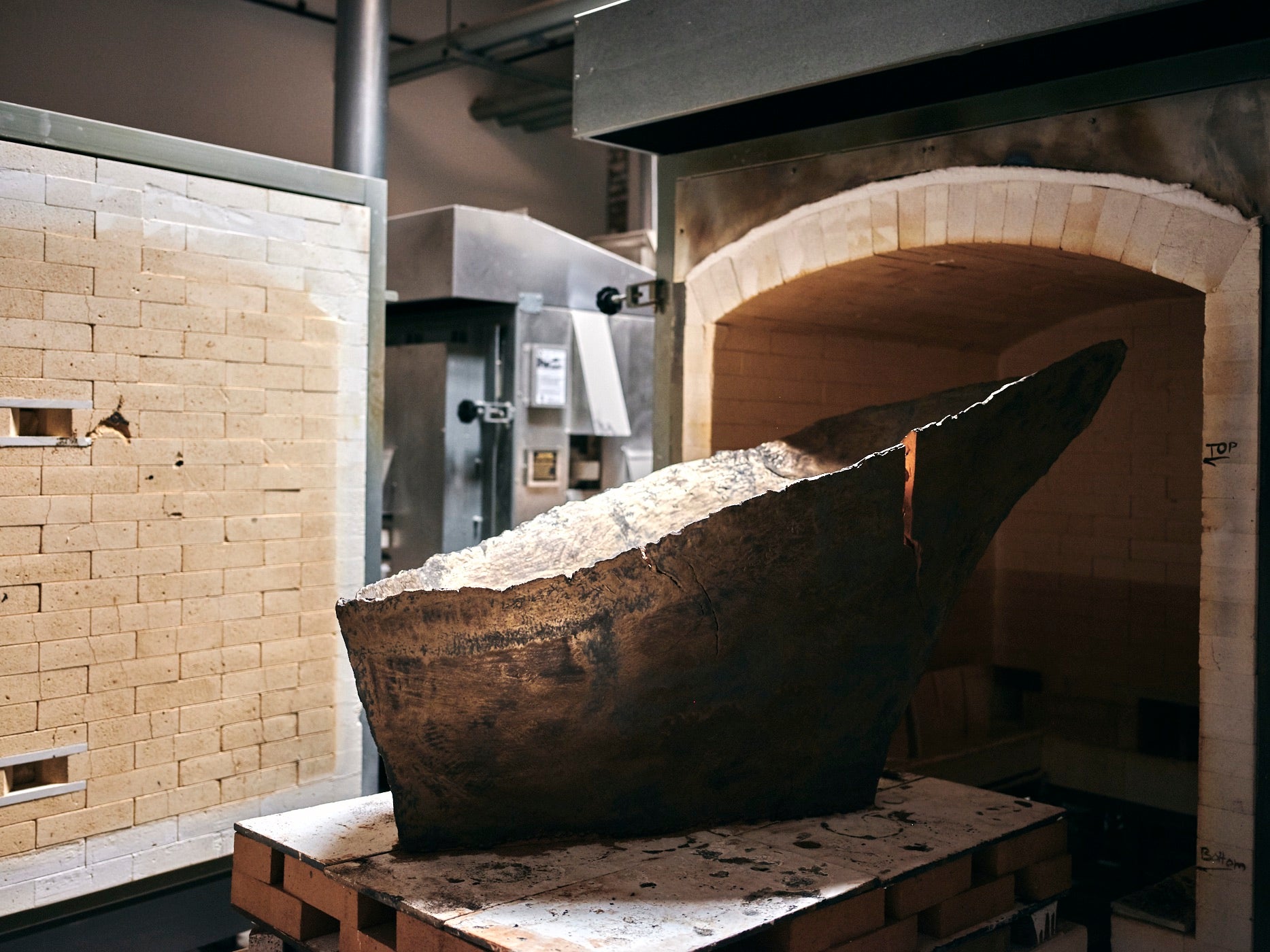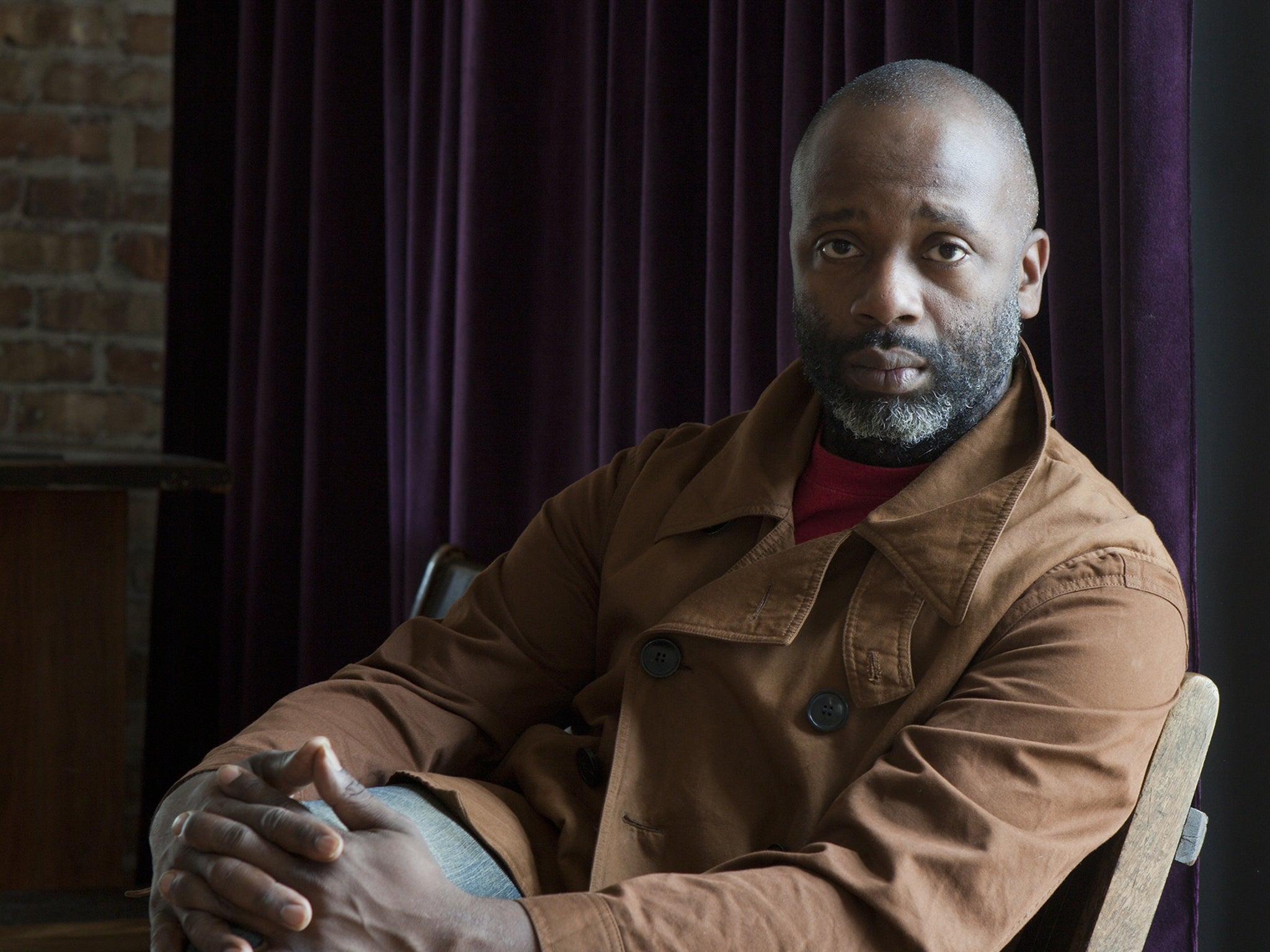Theaster Gates: A Clay Sermon review – These room-filling installations tend towards the epic
The Chicago artist’s latest exhibition at the Whitechapel Gallery is part of a year-long, multi-venue ‘investigation of clay’, involving an ‘intervention’ at the V&A and an exhibition at his London gallery, culminating in a pavilion at the Serpentine next summer

Theaster Gates exemplifies that figure of our times, the international “hero” artist – on a par with Antony Gormley, Anselm Kiefer or Olafur Eliasson – who operates on a truly multi-national scale, with teams of assistants realising simultaneous projects that seem to transcend the laws of time and space. Trained in urban planning, the 48-year-old African-American Chicagoan has turned culture-based regeneration into a personal artform. He has transformed whole chunks of Chicago’s deprived, predominantly Black South Side with cultural “nodes” – libraries, archives, performance spaces – that he has talked of connecting into a “mini Versailles” with areas of greenbelt. Given his previous success rate, I doubt he will be stopped from doing it.
Even when Gates works with humble materials such as tar, referencing his father, a roofer, or decommissioned fire hoses, referencing their use in quelling Civil Rights demonstrations, the resulting room-filling installations tend towards the epic.
So it comes as a surprise to learn that Gates considers himself primarily a potter, a practitioner of perhaps the most intrinsically small-scale, intimate and solitary of artforms – trust me, you can’t get more than one person on a potter’s wheel. Gates, who studied traditional craft pottery in Japan, offsets Zen-inspired ideas about the effacement of the craftsman with the theology of his own Baptist Christian background in which God shapes the human clay, and the human potter “learns how to shape the world”. As I said, the man thinks big.
This exhibition, part of a year-long, multi-venue “investigation of clay”, involving an “intervention” at the V&A and an exhibition at his London gallery White Cube, culminating in a Gates-designed pavilion at the Serpentine next summer, opens deceptively modestly. There is a beautifully curated display of ceramics that have inspired Gates, from old-school British potters Bernard Leach and Dame Lucie Rie to examples of Negrobilia – toys and other consumer objects with grotesquely stereotypical representations of Black people – and a large jar by David Drake, a 19th-century enslaved African-American whose pots now fetch prices in the millions. Most significant are explosive clay sculptures by “abstract expressionist” American potter Peter Voulkos, who is clearly a major influence on Gates himself. If Gates’s “response” to a large Voulkos work on loan from the V&A doesn’t hold a candle to the clumpy energy of the original, a smaller Gates piece with a ready-made clay jar engulfed by two glistening slabs of high-fired clay has a vigorous sensuality. It intrigues not least because it’s so utterly unlike anything you’d expect a big-time, globally active conceptual artist to be making.
A soundtrack of spacey Seventies jazz-funk playing on vintage vinyl makes a nice contrast, though the parading of hip references has become so prevalent in art, and not least through old records, that the frisson of reverse appropriation – of drawing old “white stuff” (Leach and Rie) into a Black retro-aesthetic – gets slightly lost.
Gates is aware of himself as a Black man on an archetypal artistic journey: the idealistic westerner learning from eastern crafts. The Japanese concept of “mingei”, which elevates the anonymous, egoless traditional craftsman, allowed him to see the cultural value in the everyday African-American experience, from his mother’s cooking to the tar “kettle” his father used for pitching roofs.
Afro-Ikebana (2019) is one of a series of Afro-Mingei works in which he attempts to fuse Japanese philosophy and Black aesthetics: a stack of folded tatami mats with a cluster of pampas grasses in a large ceramic vessel and an African mask on the wall behind.
Given those deeply personal associations he brought to the mingei concept – not to mention the resources available in his own Chicago institutions, from the archives of African-American lifestyle magazine Ebony to the record collection of house music godfather Frankie Knuckles – it seems odd he should fall back on the obvious trope of the mask as an embodiment of Blackness. While the mask isn’t a traditional masterpiece of the kind that inspired European modernists, but a clay cast of a piece of tourist art, it’s not clear what this ersatzness is bringing to the equation.

If the inclusion of a stack of bricks – representing labour, migration and human ingenuity – and various antique cabinets filled with arcane instruments and powders essential to the “alchemical” pottery process, compounds the sense of Gates’s clay sermon as a collection of intriguing points rather than a fully rounded argument, in a new film – also called A Clay Sermon – he seems to be trying to force coherence into these disparate elements through performance.
A trumpeter solos in front of a Gates ceramic sculpture, as though trying to blast soul into it, while the artist himself scat-sings while wearing an African mask in an abandoned brickworks in Montana; though the promised “sermonising” from Gates, while working at the potter’s wheel, proved largely inaudible in the version I saw.
It’s only in the final space, the long upstairs gallery, that we get to grips with Gates as an artist and ceramicist, rather than an assembler of references. Large round vessels evoking traditional African pottery, dripping with tar, sit on specially made wood and stone plinths. A pile of white casts of African masks rest on a massive limestone boulder inside a 10ft-wide cuboid frame in still-fragrant azobe wood, with the generic quality of the masks – again cast from tourist pieces – enhancing the sense of theatricality that pervades the display as a whole.
While there’s impressive craftsmanship in the imposing ergonomic forms – much of it provided by Gates’s three assistants, whose involvement he freely acknowledges – the works where you feel you’re really in the creative moment with the artist himself are some of the smallest: a series called Brick Reliquaries, in which humble bricks have been incinerated till the elements in the clay melt and fuse creating extraordinary shapes and textures. While we aren’t told that these are entirely Gates’s own work, you get the sense of being so caught up in the physicality of the process, there’s no space for cultural and historical cross-referencing. We get that feeling of wholeness and completeness we’ve been longing for in this exhibition of fascinating bits and pieces, and which we increasingly crave in our endlessly fragmentary wider culture.
Theaster Gates: A Clay Sermon, Whitechapel Gallery, London 29 September - 9 January 2022
Join our commenting forum
Join thought-provoking conversations, follow other Independent readers and see their replies
Comments
Bookmark popover
Removed from bookmarks